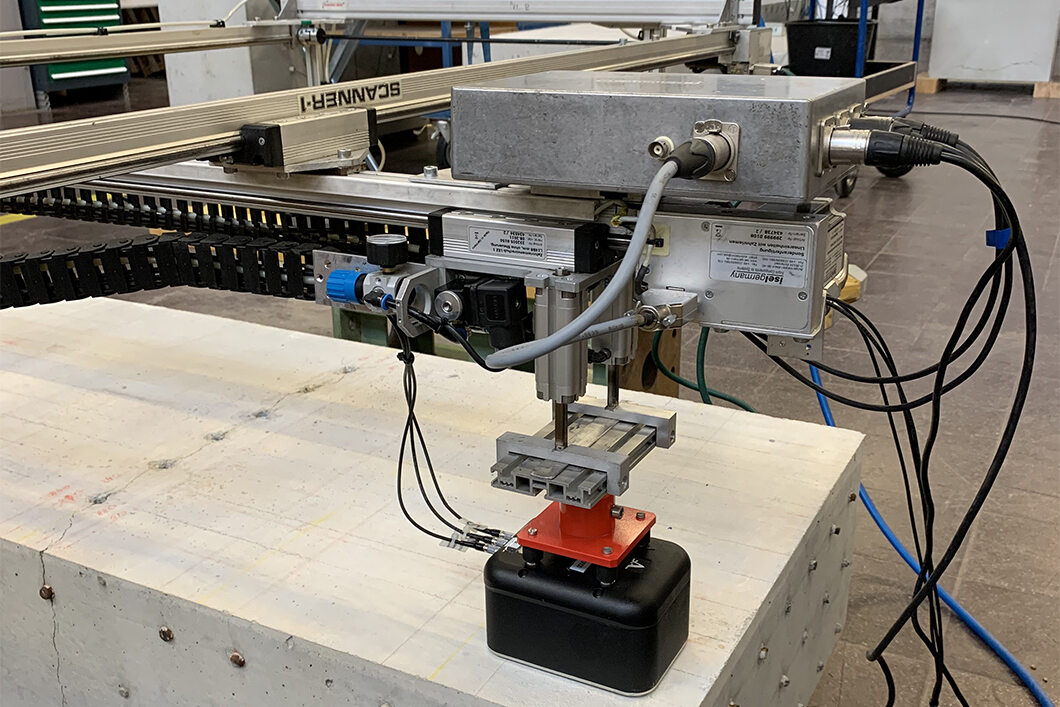
BAM reference techniques for NDT-CE: test specimens with defined, reproducible cracks and automated scanner for ultrasonic and radar testing.
Source: BAM, Non-Destructive Testing Methods for Civil Engineering division
Over the last twenty years, BAM as a federal institute for materials research and testing has developed a rich toolbox to put novel measurement techniques and evaluation methods for non-destructive testing in construction (NDT) through their paces, but above all to test their applicability in testing practice.
The most recent example of the use of this toolbox is a cooperation with the Fraunhofer Institute for Non-Destructive Testing (IZfP), which developed methods for crack evaluation in large concrete components for a major German industrial company and put them into practical use. The aim was to be able to distinguish incipient cracks from continuous cracks. IZfP has developed an evaluation methodology for ultrasonic echo measurements that makes this possible reliably.
In the course of the joint work, several components of the BAM validation instruments were used. An important component was concrete specimens with defined cracks. The methodology for reproducible crack generation was developed several years ago together with the Federal Highway Agency, USA. For the project described here, both existing specimens and specifically produced ones in the laboratory were used (Figure). In addition, a full-scale large specimen was built at the BAM Test Site Technical Safety (BAM-TTS). On these objects, IZfP collected and evaluated data using both commercial equipment and a special device developed for BAM specifically for large concrete thicknesses. As a reference, additional data were collected with an NDT scanner developed at BAM - another component from the validation toolkit (Figure). The evaluation technique developed at IZfP based on these data was successfully tested in practice at the industrial customer (link to publication).
This project was not the first successful cooperation between IZfP and BAM in this sector. A cooperation agreement has existed between the two institutions for years, which allows uncomplicated joint work ("Joint Lab NDT-CE").
The data and knowledge gained in the course of this work as well as the additionally built test specimens complement our range of instruments and will also be available in the future for the validation of other methods as well as for the research and development work at BAM.
Using the Corner Reflection for Depth Evaluation of Surface Breaking Cracks in Concrete by Ultrasound
U. Rabe, S. Pudovikov, H.-G. Herrmann, H. Wiggenhauser, Prathik Prabhakara, Ernst Niederleithinger
published in Journal of Nondestrctive Evaluation, Volume 42, Issue 2, Essay 44, Pages 1–19.


